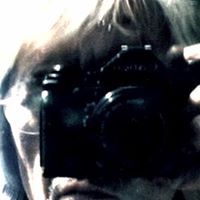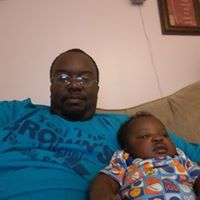William H Weeks
age ~63
from Cupertino, CA
- Also known as:
-
- William H Powers
- Bill Weeks
- Phone and address:
- 10330 Moretti Dr, Cupertino, CA 95014
William Weeks Phones & Addresses
- 10330 Moretti Dr, Cupertino, CA 95014
- 1498 Lincoln Ave, San Jose, CA 95125
- Campbell, CA
- Milpitas, CA
- 10330 Moretti Dr, Cupertino, CA 95014 • 4088502344
Emails
Real Estate Brokers

William Weeks, San Jose CA
view sourceSpecialties:
Buyer's Agent
Listing Agent
Listing Agent
Work:
Coldwell Banker
1096 Blossom Hill Rd Ste 200, San Jose, CA 95123
4084455149 (Office)
1096 Blossom Hill Rd Ste 200, San Jose, CA 95123
4084455149 (Office)
Isbn (Books And Publications)



Name / Title
Company / Classification
Phones & Addresses
Putnam Mortgage
Loans
Loans
305 1/2 South Jefferson Ave, PO Drawer 4610, Eatonton, GA 31024
8663842142
8663842142
President
Bill Weeks
Elementary and Secondary Schools
Elementary and Secondary Schools
301 Broadway #301, Alameda, CA 94501
Coldwell Banker
Real Estate Agents and Managers
Real Estate Agents and Managers
1096 Blossom Hill Rd Ste 200, San Jose, CA 95123
WEEKS BROTHERS, LLC
Coldwell Banker
Real Estate Agents
Real Estate Agents
1096 Blossom Hl Rd STE 200, San Jose, CA 95123
4084484488, 4084481540
4084484488, 4084481540
Us Patents
-
Audio Limiting Circuit
view source -
US Patent:7013011, Mar 14, 2006
-
Filed:Dec 28, 2001
-
Appl. No.:10/040922
-
Inventors:William A. Weeks - Santa Cruz CA, US
William R. Morrell - Santa Cruz CA, US -
Assignee:Plantronics, Inc. - Santa Cruz CA
-
International Classification:H03G 5/00
H03G 3/00
G10L 19/14 -
US Classification:381 98, 381107, 704224, 704225
-
Abstract:An audio limiting circuit capable of satisfying frequency dependent limits and time domain constraints, is disclosed. In one illustrative embodiment, an input node receives an unattenuated input signal and a system modeling filter predicts the amount, if any, by which the sound pressure level that would be generated by an acoustic transducer in response to the unattenuated input signal, would exceed one or more predetermined limits. In that embodiment, an energy detector separates the excess predicted sound pressure level into one or more frequency bands and calculates the average acoustic energy associated with each band. A gain logic block determines an attenuation factor based on whether one or more of the predetermined limits has been exceeded and the attenuation factor values are smoothed to minimize abrupt changes to the unattenuated input signal. A delay buffer delays the unattenuated input signal values. Finally, in the embodiment described here, the smoothed attenuation factor values are synchronized with and applied to the delayed input signal values and the resulting attenuated signal is transmitted to an output node and ultimately to one or more acoustic transducers.
-
Audio Limiting Circuit
view source -
US Patent:7242783, Jul 10, 2007
-
Filed:Jan 25, 2006
-
Appl. No.:11/340239
-
Inventors:William A. Weeks - Santa Cruz CA, US
William R. Morrell - Santa Cruz CA, US -
Assignee:Plantronics, Inc. - Santa Cruz CA
-
International Classification:H03G 5/00
H03G 3/00
G10L 19/14 -
US Classification:381 98, 381107, 381 99, 381104, 704224, 704225
-
Abstract:An audio limiting circuit capable of satisfying frequency dependent limits and time domain constraints, is disclosed. In one illustrative embodiment, an input node receives an unattenuated input signal and a system modeling filter predicts the amount, if any, by which the sound pressure level that would be generated by an acoustic transducer in response to the unattenuated input signal, would exceed one or more predetermined limits. In that embodiment, an energy detector separates the excess predicted sound pressure level into one or more frequency bands and calculates the average acoustic energy associated with each band. A gain logic block determines an attenuation factor based on whether one or more of the predetermined limits has been exceeded and the attenuation factor values are smoothed to minimize abrupt changes to the unattenuated input signal. A delay buffer delays the unattenuated input signal values. Finally, in the embodiment described here, the smoothed attenuation factor values are synchronized with and applied to the delayed input signal values and the resulting attenuated signal is transmitted to an output node and ultimately to one or more acoustic transducers.
-
Method And Apparatus For Reducing Echo And Noise
view source -
US Patent:7359504, Apr 15, 2008
-
Filed:Dec 3, 2002
-
Appl. No.:10/309695
-
Inventors:Edward L. Reuss - Santa Cruz CA, US
William A. Weeks - Santa Cruz CA, US -
Assignee:Plantronics, Inc. - Santa Cruz CA
-
International Classification:H04M 9/08
-
US Classification:37940602, 37940601
-
Abstract:The present invention provides a solution to the needs described above through a method and apparatus for reducing echo and noise. The apparatus includes a microphone array for receiving and audio signal, the audio signal including a voice signal component and a noise signal component. The apparatus further includes a voice processing path having an input coupled to the microphone array and a noise processing path having an input coupled to the microphone array. The voice processing path is adapted to detect voice signals and the noise processing path is adapted to detect noise signals. A first echo controller is coupled to the voice processing path and a second echo controller is coupled to the noise processing path. A noise reducer is coupled to the output of the first echo controller and second echo controller.
-
Auditory User Interface
view source -
US Patent:6704413, Mar 9, 2004
-
Filed:Oct 25, 1999
-
Appl. No.:09/427382
-
Inventors:William A. Weeks - Santa Cruz CA
Bruce E. Balentine - Denton TX -
Assignee:Plantronics, Inc. - Santa Cruz CA
-
International Classification:H04M 100
-
US Classification:37937401, 379419
-
Abstract:An auditory user interface provides auditory feedback concerning variable parameters of a device. Auditory user interface elements indicate modes corresponding to control functions and variable parameters. Additional auditory user interface elements indicate particular values for the parameters. Each control function is distinguished by particular auditory characteristics, such as distinct musical scales, so that the user can easily recognize which mode is active and discern the current value for the parameter corresponding to the mode. Center values and limit values are denoted by distinctive auditory elements.
-
Low Power Receiver For In Vivo Channel Sensing And Ingestible Sensor Detection With Wandering Frequency
view source -
US Patent:20210330216, Oct 28, 2021
-
Filed:Jun 14, 2019
-
Appl. No.:17/252600
-
Inventors:- TOKYO, JP
Neraj P. BOBRA - San Jose CA, US
Aditya DUA - San Jose CA, US
Ronny X. LI - San Francisco CA, US
William A. WEEKS - Santa Cruz CA, US -
Assignee:OTSUKA PHARMACEUTICAL CO. LTD. - TOKYO
-
International Classification:A61B 5/11
A61B 5/07
A61B 5/00
G16H 40/67
G16H 20/30
G01C 22/00 -
Abstract:A system, a wearable device, and a method are provided which can increase the accuracy of physiological metrics while detecting if the patient ingested digital medicine and/or improve performance of the wearable device. The wearable device can comprise machine executable instructions that when executed by the processor, cause the processor to perform various algorithms, such as, for example, at least one of a step count algorithm, a body angle algorithm, a heart rate algorithm, a peak finder algorithm, an adaptive thresholding algorithm, a heart rate variability algorithm, a R-R cleaning Algorithm, a deltaR-R cleaning algorithm, a merge twin interval algorithm, a split tall intervals algorithm, an absorb short intervals algorithm, a bimodal detection algorithm, and a resting algorithm.
-
Systems And Methods For Resolving Ingestible Event Marker (Iem) Contention
view source -
US Patent:20160380708, Dec 29, 2016
-
Filed:Jun 23, 2016
-
Appl. No.:15/190741
-
Inventors:- Redwood City CA, US
Mark Zdeblick - Portola Valley CA, US
Lawrence Arne - Palo Alto CA, US
Jonathan Withrington - San Francisco CA, US
William McAllister - Saratoga CA, US
Alireza Shirvani - Menlo Park CA, US
Jafar Shenasa - San Jose CA, US
Jeremy Frank - San Francisco CA, US
Patricia Johnson - Palo Alto CA, US
Scott Andrews - Redwood City CA, US
Robert Azevedo - Albany CA, US
William A. Weeks - Santa Cruz CA, US
Alberto Berstein - San Jose CA, US
Yashar Behzadi - Anaheim CA, US -
International Classification:H04B 15/00
H04W 72/04
A61B 5/053
A61B 90/00
A61B 5/00
H04B 13/00
H04W 52/18 -
Abstract:Systems, methods, and apparatuses are presented for resolving any interference, noise, and/or collisions caused by two or more ingestible event markers (IEMs) transmitting simultaneously or concurrently. Methods include techniques from the perspective of the IEM for randomly varying signal transmission characteristics in order to avoid collisions with other concurrently transmitting IEMs. Methods also include techniques from the perspective of a receiver for receiving multiple transmission signals from multiple IEMs and for resolving any interference or signal collisions.
-
Optical Assembly
view source -
US Patent:20150212267, Jul 30, 2015
-
Filed:Jan 30, 2014
-
Appl. No.:14/168513
-
Inventors:- Ar's-Hertogenbosch, NL
- Berwyn PA, US
Sandeep Razdan - Millbrae CA, US
William A. Weeks - Ivyland PA, US
Michael Tryson - Hanover PA, US
Jibin Sun - Mountain View CA, US
Haipeng Zhang - Santa Clara CA, US
Jonathan Edward Lee - Harrisburg PA, US
Michael Frank Cina - Elizabethtown PA, US
Jeroen Antonius Maria Duis - Didam, NL -
Assignee:Tyco Electronics Nederland B.V. - Ar's-Hertogenbosch
Tyco Electronics Corporation - Berwyn PA -
International Classification:G02B 6/12
G02B 6/13
G02B 6/122 -
Abstract:An optical assembly comprising: (a) a substrate having a first planar surface; (b) an optical component connected to the substrate and having a second planar surface parallel to the first surface and at least one first optical axis; (c) a plurality of optical fiber stubs having a certain diameter and being disposed at least partially between the substrate and the optical component; (d) at least one of the substrate or the optical component having one or more grooves on the first or second surfaces, respectively, such that each groove is configured to receive one of the plurality of fiber stubs such that each of the fiber stubs protrudes a first distance from the first or second surface to space the first surface the first distance from the second surface; and (e) a least one optical conduit having a second optical axis, the optical conduit being disposed on the first or second surface such that the second optical axis is optically aligned with the first optical axis.
License Records
William David Weeks Md
License #:
4024 - Expired
Category:
Medicine
Issued Date:
Dec 27, 2000
Effective Date:
Oct 1, 2003
Expiration Date:
Oct 1, 2003
Type:
Backup PA Supervisor
William David Weeks Md
License #:
1001 - Expired
Category:
Medicine
Issued Date:
Oct 23, 2000
Effective Date:
Oct 6, 2009
Expiration Date:
Oct 1, 2009
Type:
Physician Assistant Supervisor
William David Weeks Md
License #:
860 - Expired
Category:
Medicine
Issued Date:
Oct 27, 1999
Effective Date:
Feb 26, 2007
Expiration Date:
Oct 1, 2007
Type:
Physician Assistant Supervisor
William David Weeks Md
License #:
1145 - Expired
Category:
Medicine
Issued Date:
Nov 16, 2001
Effective Date:
Jan 9, 2003
Expiration Date:
Oct 1, 2003
Type:
Physician Assistant Supervisor
William David Weeks Md
License #:
1082 - Expired
Category:
Medicine
Issued Date:
May 16, 2001
Effective Date:
Nov 16, 2001
Expiration Date:
Oct 1, 2003
Type:
Physician Assistant Supervisor
William David Weeks Md
License #:
506 - Expired
Category:
Medicine
Issued Date:
Dec 27, 1995
Effective Date:
May 15, 2001
Expiration Date:
Oct 1, 2001
Type:
Physician Assistant Supervisor
William Weeks
License #:
9023 - Expired
Category:
Professional
Issued Date:
Oct 10, 1973
Expiration Date:
Dec 31, 1989
Resumes

William Weeks Plano, TX
view sourceWork:
Keller Williams Realty
Cupertino, CA
May 2011 to Dec 2011
California Realtor Papa Johns
San Jose, CA
Dec 2010 to Dec 2011
Pizza Delivery Driver Wesco Properties
Bedford, TX
Jan 2006 to May 2009
Leasing Associate Austin College
Sherman, TX
Sep 2005 to May 2009
Student Work Study Program
Cupertino, CA
May 2011 to Dec 2011
California Realtor Papa Johns
San Jose, CA
Dec 2010 to Dec 2011
Pizza Delivery Driver Wesco Properties
Bedford, TX
Jan 2006 to May 2009
Leasing Associate Austin College
Sherman, TX
Sep 2005 to May 2009
Student Work Study Program
Education:
Austin College
Sherman, TX
2005 to 2009
Bachelor of Arts in History/Religion
Sherman, TX
2005 to 2009
Bachelor of Arts in History/Religion
Medicine Doctors

William D. Weeks
view sourceSpecialties:
Family Medicine
Work:
Southwest Family Physicians
8258 Hascall St STE 100, Omaha, NE 68124
4023913010 (phone), 4023913076 (fax)
Gretna Family Health
11820 Standing Stone Dr, Gretna, NE 68028
4023323903 (phone), 4023913076 (fax)
Think Whole Person Healthcare
7100 W Ctr Rd, Omaha, NE 68106
4025069121 (phone), 4028587112 (fax)
8258 Hascall St STE 100, Omaha, NE 68124
4023913010 (phone), 4023913076 (fax)
Gretna Family Health
11820 Standing Stone Dr, Gretna, NE 68028
4023323903 (phone), 4023913076 (fax)
Think Whole Person Healthcare
7100 W Ctr Rd, Omaha, NE 68106
4025069121 (phone), 4028587112 (fax)
Education:
Medical School
University of Nebraska College of Medicine
Graduated: 1981
University of Nebraska College of Medicine
Graduated: 1981
Procedures:
Allergen Immunotherapy
Arthrocentesis
Continuous EKG
Destruction of Benign/Premalignant Skin Lesions
Electrocardiogram (EKG or ECG)
Pulmonary Function Tests
Skin Tags Removal
Vaccine Administration
Vasectomy
Arthrocentesis
Continuous EKG
Destruction of Benign/Premalignant Skin Lesions
Electrocardiogram (EKG or ECG)
Pulmonary Function Tests
Skin Tags Removal
Vaccine Administration
Vasectomy
Conditions:
Acne
Acute Bronchitis
Acute Conjunctivitis
Acute Sinusitis
Acute Upper Respiratory Tract Infections
Acute Bronchitis
Acute Conjunctivitis
Acute Sinusitis
Acute Upper Respiratory Tract Infections
Languages:
English
Description:
Dr. Weeks graduated from the University of Nebraska College of Medicine in 1981. He works in Gretna, NE and 2 other locations and specializes in Family Medicine. Dr. Weeks is affiliated with CHI Health Bergan Mercy, CHI Health Lakeside Hospital, Nebraska Methodist Hospital and Nebraska Orthopaedics Hospital.

William D. Weeks
view sourceSpecialties:
Family Medicine
Work:
Mount Kisco Medical Group
2 Stowe Rd STE 5, Peekskill, NY 10566
9147394800 (phone), 9147395172 (fax)
2 Stowe Rd STE 5, Peekskill, NY 10566
9147394800 (phone), 9147395172 (fax)
Languages:
English
Description:
Mr. Weeks works in Peekskill, NY and specializes in Family Medicine. Mr. Weeks is affiliated with New York Presbyterian Hudson Valley Hospital Center.

William Richard Weeks
view sourceSpecialties:
Pediatrics
Plaxo

William L. Weeks
view sourceSan Diego, CACEO at Southern Pacific Group Do the right thing, Have Balance, Pay Attention, Do your Duty, Live Honorably

William A Weeks
view sourceDenver, CO

William Weeks
view source
william weeks
view sourceClinical Associate Professor at Medaille College
Classmates

William Weeks
view sourceSchools:
Whigham High School Whigham GA 1974-1978
Community:
Connie Pickren

William Weeks
view sourceSchools:
Warrenton High School Warrenton VA 1959-1963

William Weeks
view sourceSchools:
Chicora High School Charleston SC 1959-1963
Community:
Steve Bovie, Patricia Lucas

William Weeks
view sourceSchools:
Chicora High School Charleston SC 1959-1963
Community:
Steve Bovie, Patricia Lucas

William Weeks
view sourceSchools:
Zavalla High School Zavalla TX 1983-1987
Community:
Cecil Hubbard, Katherine Hoxsey, Angela Burnett, Tony Burch, Ray Jones

William Weeks
view sourceSchools:
Wilson Central High School Lebanon TN 1998-2002
Community:
Alason Braun

William Weeks
view sourceSchools:
Washington & Lee High School Montross VA 1981-1985
Community:
Wilbert Pierce, Jay Campbell

William Weeks
view sourceSchools:
Kilmichael High School Kilmichael MS 1953-1957
Community:
Crystal Hinton, Sharon Bibbs, Tony Lee, Robert Smith, Betty Nolan

William Arnold Weeks
view source
William J. Weeks
view source
William Edward Weeks Jr.
view source
William Irvin Weeks
view source
William J. Weeks
view source
William Weeks Jr.
view source
William DaProfessor Weeks
view source
William Shannon Weeks
view sourceGoogleplus

William Weeks

William Weeks

William Weeks

William Weeks

William Weeks

William Weeks

William Weeks

William Weeks
Youtube
Myspace
Flickr
Get Report for William H Weeks from Cupertino, CA, age ~63
















